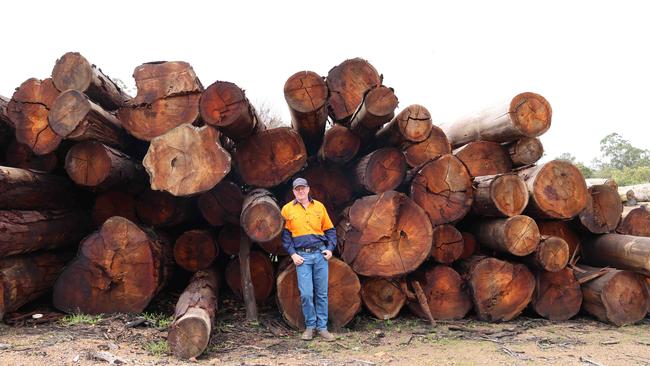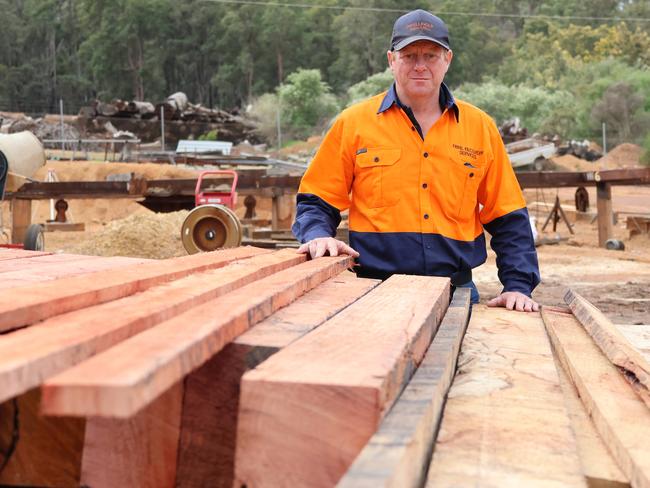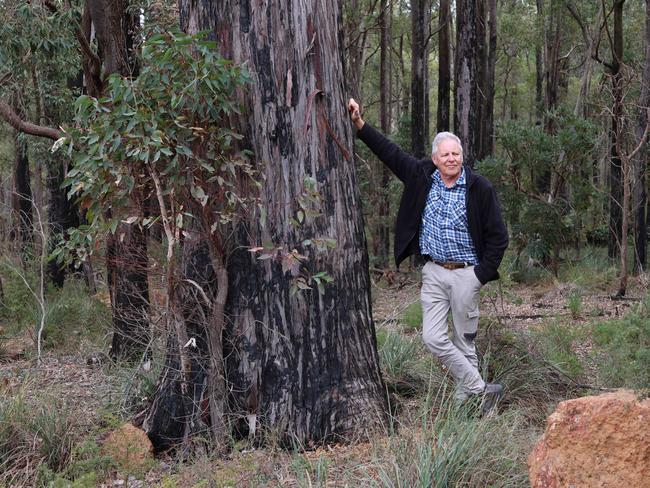Bush Summit: Jobs lost in a forest as felled WA timber millers face uncertain future
Western Australia’s storied hardwood timber industry has been in a state of flux since the government banned native logging in January.

Timber mills struggling to survive in the wake of Western Australia’s native forestry logging ban are enduring ongoing uncertainty, with some still waiting to hear if they will be supplied with trees from cleared mine sites.
The state’s historic native hardwood industry was effectively shut down in January, just over two years after the former McGowan government said it would cut access to state forest timber because of concerns about climate change, biodiversity loss, carbon sequestration and declining timber yields.
Hundreds of direct jobs in the state’s storied timber towns were lost as a result of the ban and at least six mills were closed.
The handful that remained were hopeful they could survive, albeit in a reduced form, by milling trees cut down to make way for bauxite mines and by sourcing timber from farms, private forests and the government’s ecological thinning program.
But nine months since their supply of native timber was formally cut off, only a handful of millers have received a preliminary letter of offer from the state government for mine site logs, and several have been left hanging, with no response to applications.
The mills offered jarrah and marri logs by the WA Forest Products Commission have not been given any guarantee of supply.
The maximum amount offered in some cases was about a third of their previous minimum supply.
Forest Industries Federation of WA chief executive Adele Farina, a Labor member of the WA Legislative Council from 2001-21, said the situation was untenable.
“With those significantly reduced volumes, most of the mills have had to, and will have to, reduce their workforce,” Ms Farina said. “There is still a huge amount of uncertainty for businesses.
“And in addition to that, there were a number of businesses that didn’t get a letter of offer but weren’t told that they have missed out either.
“They’re trying to get certainty from the government … and so far, they’re just hitting a wall of silence.”
Jay Branson, who has worked at the Dwellingup Sawmill south of Perth since he left school, and bought the mill in 2004, said he had been forced to overhaul his supply model while transitioning long-term into plantation timber.
He has been taking logs from roadside clearing, windfalls and fence-line clearing on farms.
“No recovery is too big or too small,” Mr Branson said.

“With the supply becoming less, it means the utilisation of the log needs to be much better so there’s no waste.
“It’s been a time of growth for us, but we’re not growing bigger, just maturing.
“I’ve got 14 employees and I need to keep their kids going through school.”
Forestry Minister Jackie Jarvis said the government had committed $80m to help the industry transition away from native forestry.
“Some sawmills that received this support chose to continue on with reduced volumes available from ecological thinning and mine site clearing activities,” Ms Jarvis said.
“With the end to commercial native forest logging, the new Forest Management Plan 2024-33 recognised the need to manage our forest for forest health outcomes.
“As part of this plan the Department of Biodiversity, Conservation and Attractions undertakes a program of ecological thinning work designed to improve forest health outcomes and build resilience to drought and bushfire.”
WA is particularly famed for its versatile jarrah timber, which has anti-rot properties and has been a staple in furniture and building supply.
“I think it’s a shame this beautiful product isn’t celebrated,” Mr Branson said.

Forestry consultant John Clarke, who worked for the FPC for more than 30 years, said the ban on native logging should be scrapped so that the industry could work with the government to sustainably manage forests.
“It’s like a Magic Pudding if it’s harvested sensibly,” he said.
“You can utilise the products for all those wonderful uses that we love and it’ll grow back again if it’s good management.”






To join the conversation, please log in. Don't have an account? Register
Join the conversation, you are commenting as Logout